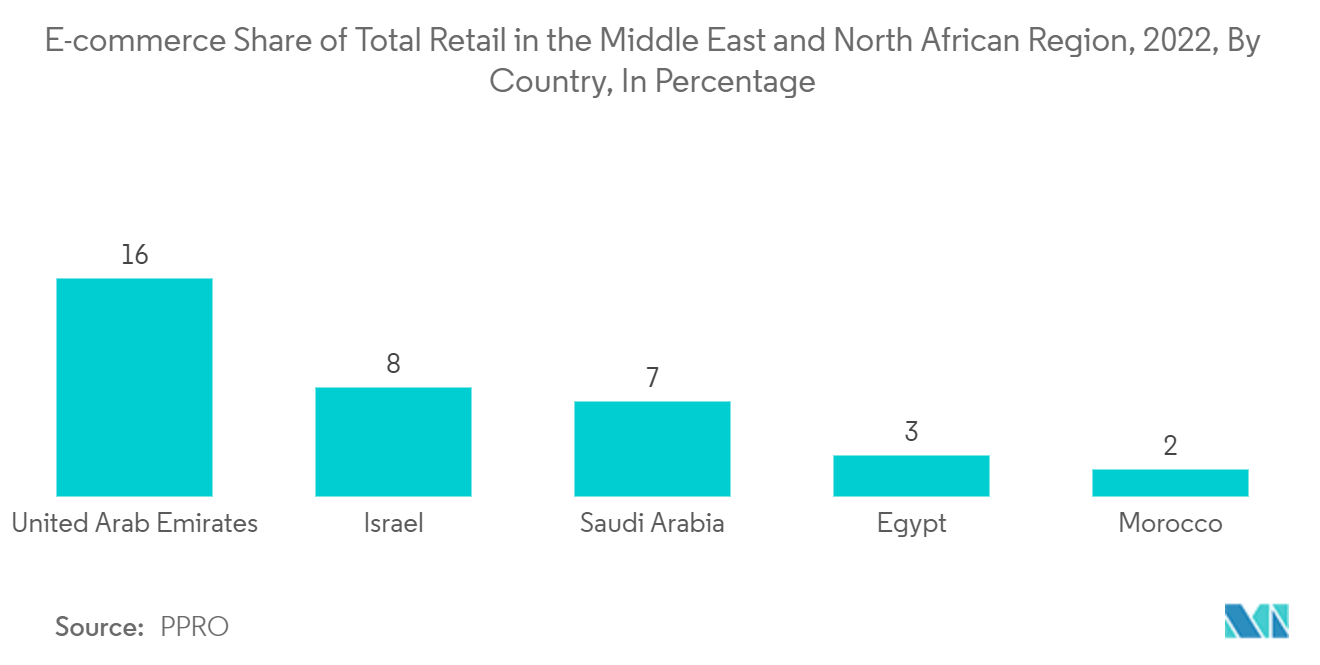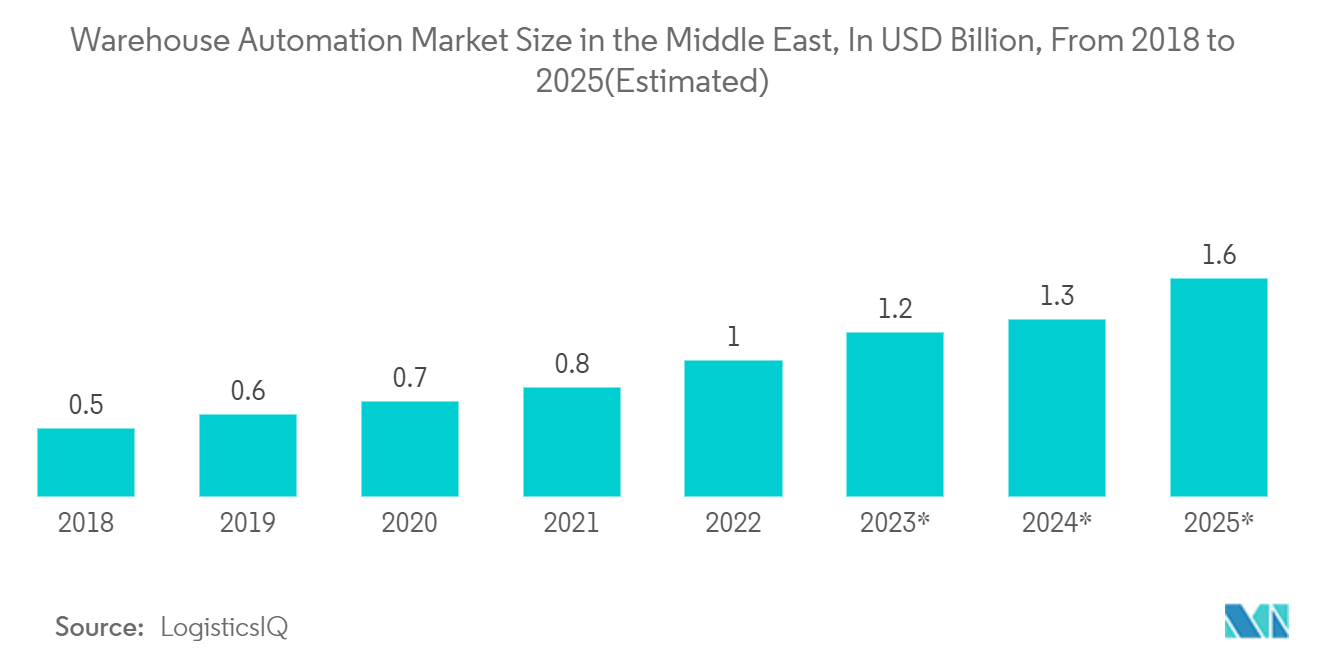Market Trends of GCC Contract Logistics Industry
Growth in E-commerce Driving the Market
To facilitate the trade and e-commerce market, the United Arab Emirates has come up with initiatives to develop its infrastructure and technology to implement a well-integrated transport system and logistics infrastructure. In 2020, the United Arab Emirates was the 30th largest market for e-commerce, with a revenue of USD 6 billion. The increasing e-commerce activities are expected to drive the UAE freight forwarding market. In the second quarter of 2021, statistics from the "State of the Retail Sector in the UAE" study highlighted that the recovery that began earlier in the year appeared to be continuing.
The United Arab Emirates is the 27th largest market for eCommerce with a predicted revenue of USD 10,205.5. Million by 2023, placing it ahead of Saudi Arabia. The global e-commerce boom is also fuelling demand for UAE warehouses. The UAE's e-commerce market is projected to grow by 8.4 percent annually to USD 17.3 billion by 2027, according to a report this week by Tradeling.
E-commerce in Saudi Arabia is experiencing rapid growth amid the COVID-19 pandemic, demanding stronger supply chains, which will drive the freight forwarding market. With an increase of 34%, the Saudi Arabian e-commerce market contributed to the global growth rate of 29%. The growing exposure of social media platforms in the region also contributed to more online engagement, which converted into e-commerce sales for businesses in the country.
E-commerce is expected to be one of the biggest growth drives for the freight forwarding market in Saudi Arabia. According to sources, the number of users will reach 34.5 million by 2025, and user penetration is anticipated to reach 92.5% by 2025.

Increase in Warehousing opportunities
The UAE is one of the fastest-growing countries in the GCC region, owing to the rising importance of Dubai in world trade and its strong economic outlook. Bahrain offers some of the lowest setup and operating costs for a logistics business with cost savings of 30-40% compared to the rest of the GCC. This has encouraged several companies to invest in the country to set up businesses and access the GCC and the Arab world.
More warehouses must be built in the UAE to meet future needs, as high-growth industries such as e-commerce and manufacturing drive demand for industrial property. The Dubai Industrial Strategy 2030 hopes to generate an additional AED160 billion by the end of the decade by transforming the emirate into a global industrial hub.
The UAE's Operation 300bn aims to increase the industrial sector's contribution to GDP to AED300 billion (USD 81.6 billion) by 2031, from AED133 billion in 2021. In October 2022, Edamah held a ceremony for its Sitra Logistics Park, a top-notch warehouse facility in Bahrain's logistics sector. Trident Warehousing signed a ten-year lease for an 8,137 square-meter building for USD 7 million.
In September 2022, International Maritime Industries (IMI), the largest shipyard in the MENA region, and Bahri Logistics, one of Bahri's business groups, announced a long-term deal to improve their supply chain through cutting-edge storage and logistics services.


